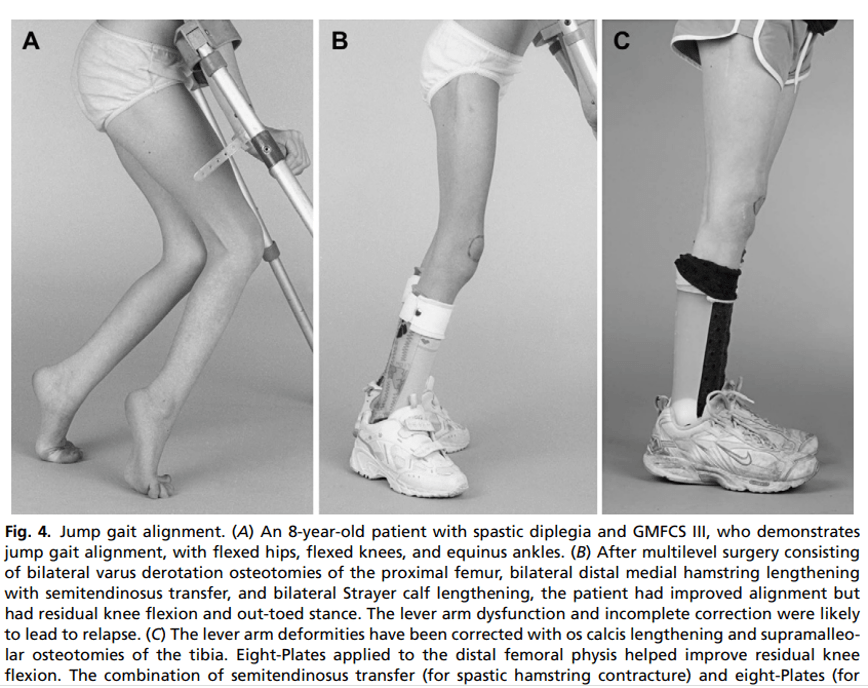
GMFCS(總體運動功能分類系統)

治療階段

自然發展史

7-12歲會達到水平,並逐漸下降
Given that the GMFCS is a grading system and not an outcome measure, it is the major prognostic information that must be considered in all children with CP.
治療階段

OBSERVATIONAL GAIT SCALE (OGS)
何時需要治療?
在這裡展示你的項目,功能或客戶

通常需要進行手術時間是9歲

Spastic classification
Spastic classification

Spastic classification
Gait correction surgery is an option for many children with CP at GMFCS levels I to III but with different clinical goals at each level. SEMLS will be discussed primarily in the GMFCS level II section. Preventive hip surgery will be discussed in the GMFCS level III section, reconstructive hip surgery in the GMFCS level IV section, and salvage surgery in the GMFCS level V section.
GMFCS II
在這裡展示你的項目,功能或客戶

GMFCS II
Between 6th and 12th birthdays: Children walk in most settings and climb stairs holding onto a railing. They may experience difficulty walking long distances and balancing on uneven terrain.Children have only minimal ability to perform gross motor skills such as running and jumping .
Between 12th and 18th birthdays: Youth walk in most settings, but environmental factors and personal choice influence mobility choices. At school or work, they may require a handheld mobility device for safety and climb stairs holding onto a railing. Outdoors and in the community, youth may use wheeled mobility when traveling long distances .
Risk of hip displacement :
(MP greater than 30%): 15%
Most children at GMFCS level II have either a type IV hemiplegia or a mild spastic diplegia.

通常是Group IV
- It is important to note that type IV hemiplegia is associated with progressive hip displacement in a significant number of children.
- In GMFCS I/II and few III level children with acetabular dysplasia, we typically prefer performing either a triple pelvic osteotomy (open growth plates) or a periacetabular osteotomy (closed growth plates) to correct the present deformity
- Spastic equinovarus is much more common in hemiplegia than in diplegia

Single event multiple level surgery
Hip: Varus derotation osteotomy
Knee: semit transfer + 8 plate
Ankle: ETT derotation
Foot: calcaneous lengthening or subtalar fusion
© 2019-2025








